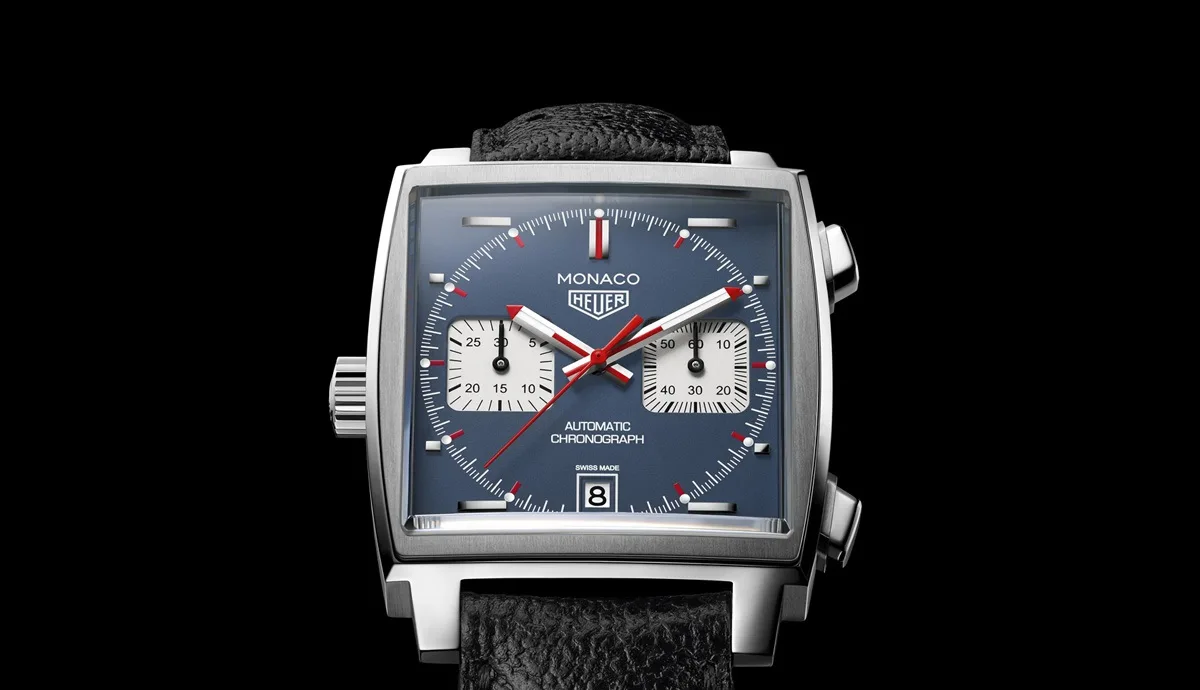By Jovan K
TAG Heuer Monaco has a very interesting beginnings and as a horology fan myself, I can’t help but dig deeper into what really made the Monaco legendary high-end sports watch. The brand was created in 1860 by its 20 year old founder Edouard Heuer. The company grew quickly by providing high-quality and very reliable chronographs and timepieces that also contributed to watchmaking innovations like the oscillating pinion still used today.
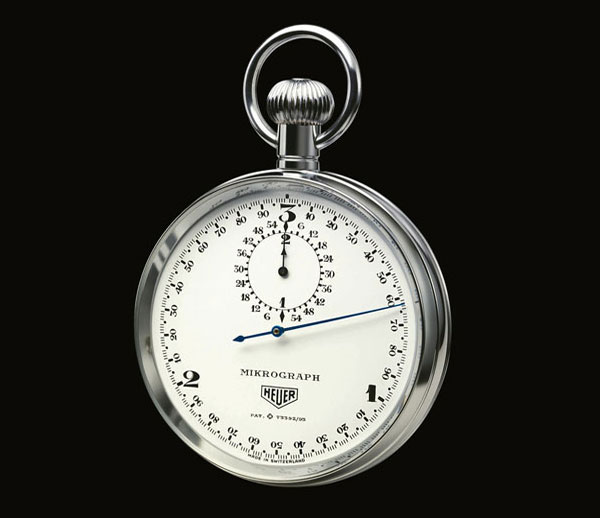
Mikrograph 1911
Before Monaco, another success of the company resulted from its direct connections with motor sports paving the way for a chronograph to be built in 1911, the Mikrograph – world’s first stopwatch with a precision of 1/100 seconds in 1916. This is the pioneering board watches for racing cars that continued in 1933 and also placed on the legendary stopwatch Autavia. Many Olympic Games and other sporting events used Heuer’s pocket chronographs as official stopwatches.
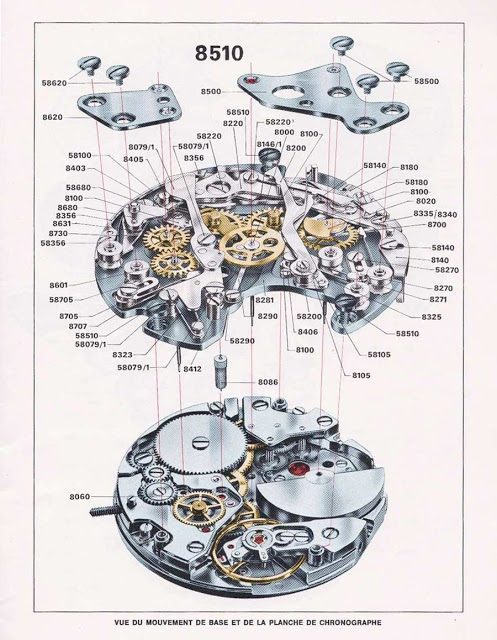
By 1969, the company has already built a solid sporty image and this allowed for the creation of the iconic Monaco. The original Monaco was innovative using a unique square case design. Furthermore, it was the result of the partnerships between Jack William Heuer, a great-grandson of the company founder, Buren (expert on innovative thin automatic movements), Dubois Depraz (the leading specialist in the development of chronograph modules and other complications at this time) and Breitling (shared funding for the Monaco project). The Monaco sports a modular automatic chronograph built on a Buren base movement that includes the self-winding and calendar mechanisms with an independent Dubois-Depraz chronograph module secured to the watch by three screws. It has 19,800 vibrations per hour reaching 42 hours of power reserve.
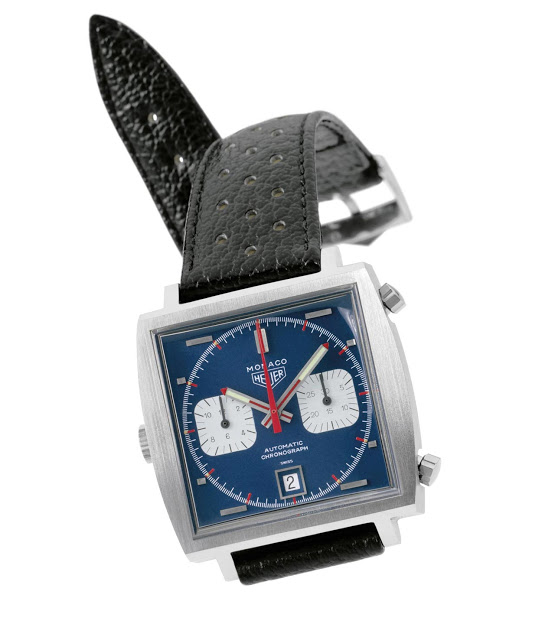
1133B
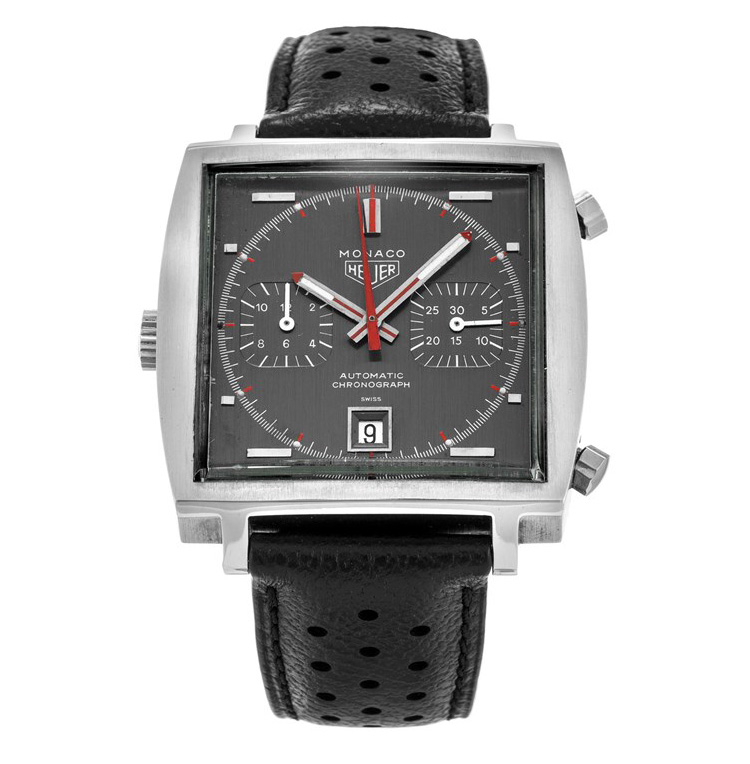
1133G
The very first Heuer Monaco was released at the Basel fair becoming the world’s first waterproof automatic chronograph with a square case (Jack Heuer chose the square case proposed by Erwin Piquerez, the owner of a large Swiss industry making watch cases). It retailed for US$ 200 with two models: reference 1133B and reference 1133G where B is Blue and G is Grey while the first two digits refer to the mounted calibre. The Monaco shook up the industry particularly the chronograph division with its unusual square case design and fully automatic movement that requires the wearer to only touch the crown for time setting.
On aesthetics alone, the Monaco was brilliant. The 40mm x 38mm case looks daunting but tamed by its metallic blue dial and domed plastic crystal. The sub-dials at 9 and 3 o’clock recorded chronograph hours and minutes respectively. There was no continuos second hand in the original but a large red chronograph second hand instead pointing to the white outer 1/5th seconds scale.
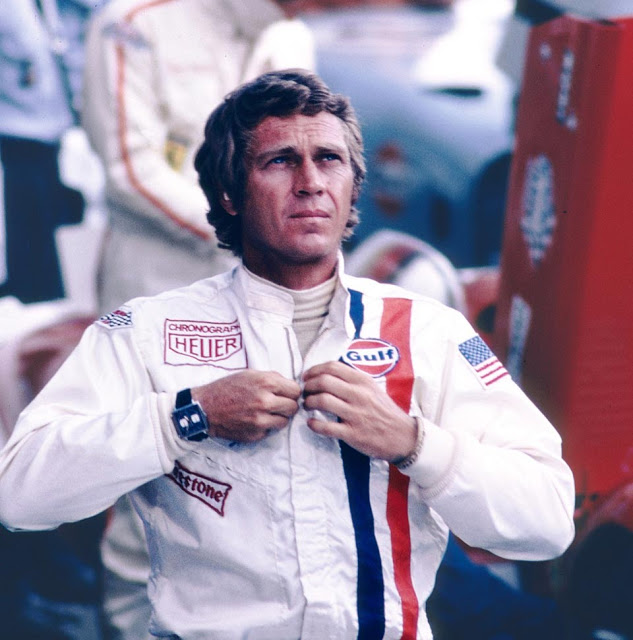
Finally, the Monaco became iconic when Steve McQueen became its face. The filming of the “Le Mans” movie produced in 1970 and released in 1971 used several versions of the Monaco watch.
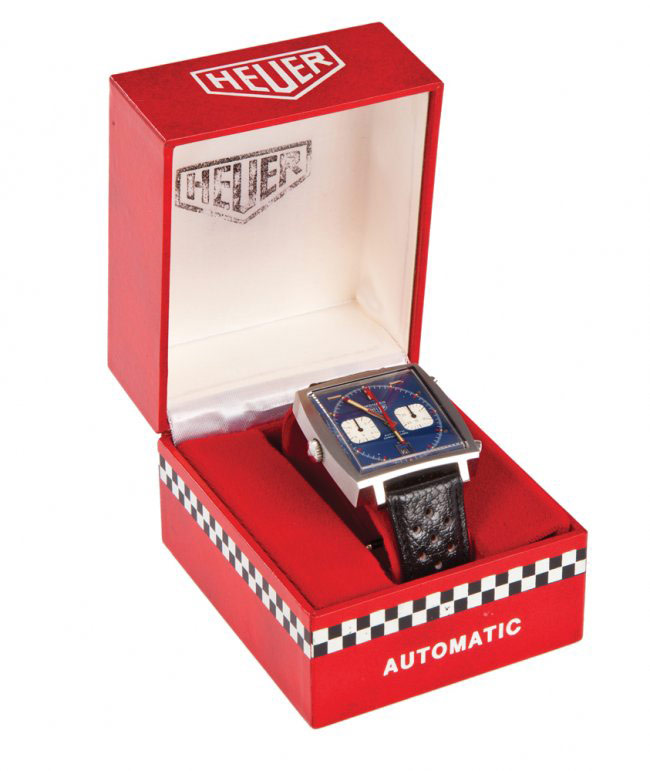
One of these models was auctioned at a Hollywood memorabilia in July 2012 for a whopping US$ 650,000 (US$ 799,500 if you count the buyer’s premium). The company then saw many changes like TAG Group (Techniques d’Avant-Garde) acquiring a majority stake in the Heuer company forming TAG Heuer in 1985 and the luxury goods giant LVMH (Louis Vuitton Moët Hennessy) S.A. presenting a takeoffer offer which got accepted and resulted in LVMH owning nearly 100 percent of the Swiss company in 1999.
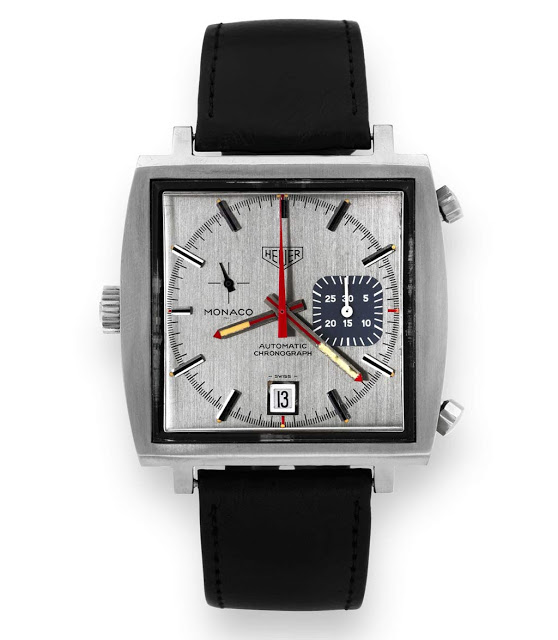
1533G 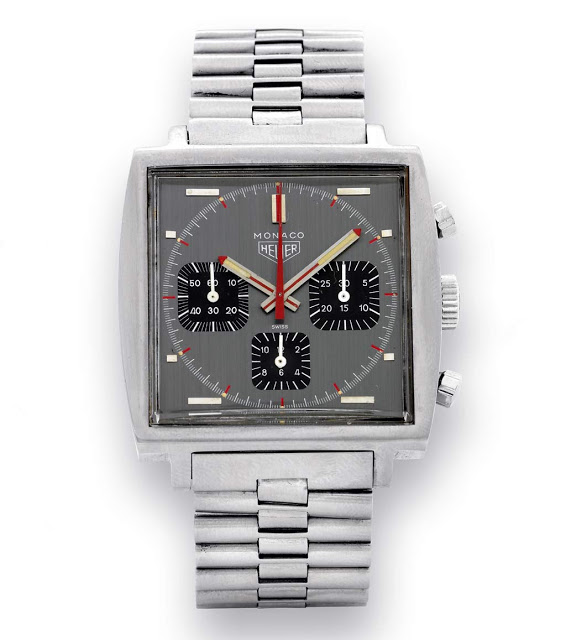
73633G
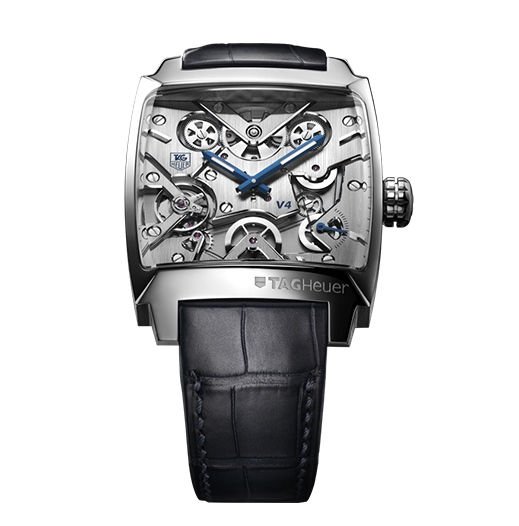
Monaco V4
The Monaco saw many design changes that ultimately put it at the pedestal of the world’s most iconic watches that included several versions like the Monaco 1533G with small continuous seconds at 10 o’clock, the Monaco 73633G with grey dial and black registers, and the modern Monaco V4.

Tag Heuer Monaco Calibre 11 Chronograph Re-issue Watch
The Monaco is now the most distinguishable chronograph watch ever made with half a century of history and still maintaining its original square case design. For more info, please visit tagheuer.com

